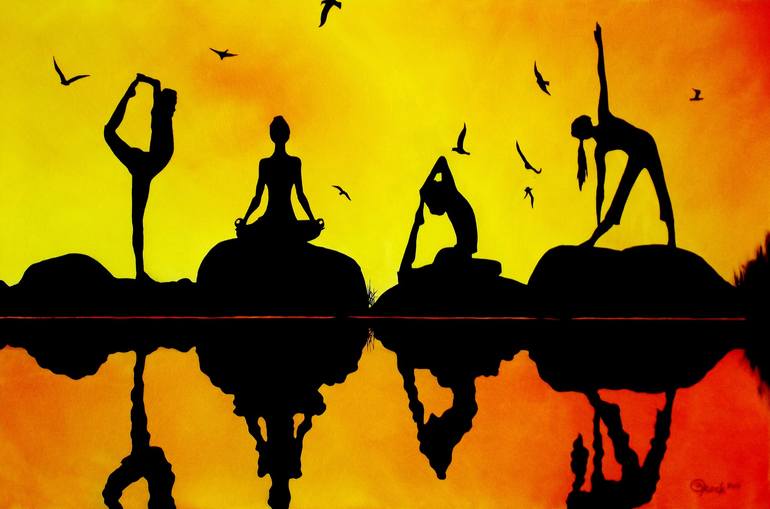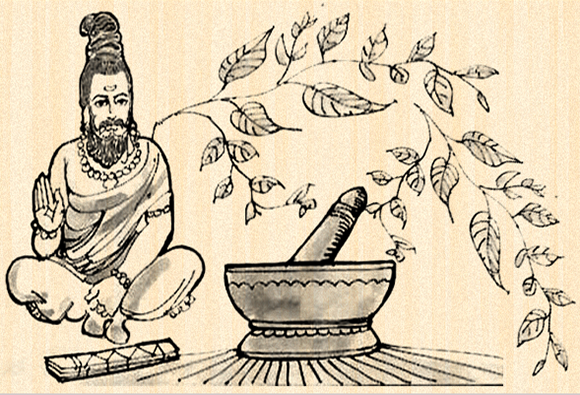
A Brief History of Yoga
From: The Yoga Institute

Yoga’s history has many places of obscurity and uncertainty due to its oral transmission of sacred texts and the secretive nature of its teachings. The early writings on yoga were transcribed on fragile palm leaves that were easily damaged, destroyed or lost. The development of yoga can be traced back to over 5,000 years ago, but some researchers think that yoga may be up to 10,000 years old old. Yoga’s long rich history can be divided into four main periods of innovation, practice and development.
What Is Yoga?
Yoga, most people believe, is just asanas and pranayamas that are meant to keep a person in good health. But there’s more to this ancient art and science that seeks to harmonize body, mind, and spirit. The word `Yoga’ is derived from the Sanskrit word `yuj’, meaning `to join’ or `to unite’. It is meant to help the individual overcome suffering and help him/her evolve spiritually to the `state of liberation’.
One of the oldest sciences in the world, Yoga originated in India. According to mythology, Lord Shiva was the first one to impart the knowledge of yoga. Yoga, dating back to 2700 BC, is an offering of the Indus valley civilization that seeks to promote both the material and spiritual well-being of humanity. Basic human values are at the heart of Yoga.
The earliest mention of `yoga’ is in the Rig Veda. The Atharva veda mentions `breath control’, but it is not possible to pin down exact dates because the Vedas were passed down orally. But much before this—2700BC—several seals depicting Yoga asanas were found in the Indus-Saraswati civilization. The main sources that provide information about Yoga and associated literature are available in the Vedas, Upanishads, Smritis, teacheings of Buddha, Panini, the epics, the Puranas, etc.
500 BC to 800 AD is considered the classical period and also the richest period in the growth of Yoga. The commentary by Vyasa on Yoga Sutras was written during this period, and two great religious teachers—Mahavira and Buddha—made their appearance during this time. The eight-fold path by Buddha can be considered as the precursor of Yoga Sadhana. More elaborate explanations can be found in the Bhagwad Gita which presents, in greater detail, the concept of Gyan Yoga, Bhakti yoga, and Karma yoga. They are timeless and are relevant even today.
Patanjali’s Yoga Sutras, besides focusing on various aspects of yoga, is identified with the eight-fold path of yoga. During this period, the focus was on the mind; Yoga seeks to bring both body and mind under control to experience equanimity.
The Post-classical period stretches from 800 A.D. – 1700 A.D. During this period, Adi Shankaracharya, Ramanujacharya were the more prominent contributors, and the teachings of Suradasa, Mirabai, Tulsidas also gained prominence. Matsyendranath, Gorkshanatha, Suri, Gheranda, Shrinivasa Bhatt were responsible for spreading Hatha yoga during this period.
Later, in the mid-nineteenth century, Swami Vivekananda took Yoga to the West. Raja Yoga was developed by Ramana Maharshi, Ramakrishna Paramahansa, K Pattabhi Jois, Paramahansa Yogananda. Shri Yogendraji made a vital contribution to the field of yoga by demystifying it and making it available to the householder; this way yoga became accessible to millions, many of whom had believed till then that yoga was only for mystics and recluses.
Briefly, this has been the long journey that Yoga has taken into the 21st century. Yes, it has changed and grown over the years, but its essence remains the same, which is becoming self-realized.
More About Hinduisme
Features
Copyright © 2018 SEAN-O-VISTA

Powered with 


